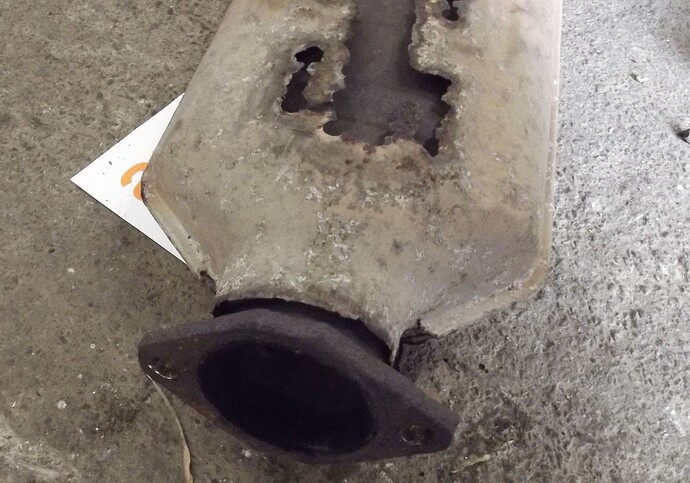This will probably refer to Eunos Roadster imports and I will keep this as brief as possible, but it may be of interest and use to some on here.
There always seems to be questions regarding the requirement of a catalyst on some MX-5’s, typically early 90’s and imports, well hopefully I have the answer as far as current legislation goes.
My 1993 V Spec broke down some time ago. It was recovered by the AA and when I investigated it turned out to be the CAT had collapsed/broken up internally and blocked the exhaust, subsequently stopping the car. I took the CAT off, hooked out all the bits and refitted the empty shell and the car was fine.
When it went for MOT it had an advisory that the CAT was not working, but it passed the emissions test OK. On the next MOT this year it was again advised that the CAT was not working but it still passed. I asked the tester if I could fit a De-Cat pipe and he said it was a bit of a “grey area” as the manual stated that if fitted the CAT should be in place even though it only needed a Basic Two Gas test and not a full CAT test.
I decided to contact the VOSA help department to see if I could get any information, but was not confident of getting a reply. However to my surprise, I received a reply the next day giving me the current information. I have copied the reply below so that it may help others on here, but basically 92 to 95 vehicles only require a CAT test if there is a VDS identifying number in the emissions data available to the tester. This is taken from the 4th to the 9th digits of the VIN number. To me it would appear that NA6C and NA8C which are import numbers are not listed so do not need a CAT even if originally fitted.
Anyway a copy of the VOSA reply to me is below and will let you all inwardly digest and come to your own conclusions. Hopefully this will be of help and give a definitive answer. By following the inserted links the VDS codes and test data can be accessed. Any MOT testers on here with a view?
Hi Philip
There is no confusion.
Spark ignition cars first used on or after 1 August 1992 are subject to a Basic Emissions Test (BET) regardless of whether a catalytic converter is fitted or required. In the event that the BET is failed, it becomes necessary to reference both the MOT Inspection Manual, Section 7.3 and the In Service Exhaust Emission Standards for Road Vehicles publication (Emissions book). The MOT Inspection Manual is available on-line at http://www.motinfo.gov.uk/htdocs/ and the Emissions book at https://www.gov.uk/government/uploads/system/uploads/attachment_data/file/194133/Emissions_17th_Edition.pdf
For vehicles first used between 1 August 1992 and 31 July 1995, if there is an exact match for the vehicle in the Emissions book, then a full cat test must be carried out. Where this is the case, the vehicle must have a catalytic converter fitted or it will fail, regardless of the result of the emissions test.
If there is not an exact match in the Emissions book, then the vehicle will be subject to a non-cat emissions test (two gas test). Where this is the case, the vehicle is not required to have a catalytic converter fitted for MOT purposes, regardless of whether one was originally fitted.
I am unable to provide an answer specific to a particular vehicle as you have not provided any details of such. However, assuming you have the relevant Vehicle Identification Number (VIN), you can easily check for yourself using the link to the Emissions book and referencing page 70 of Section 1 (page 86 of the pdf). The Mazda VDS number is the 4th to 9th digits of the VIN.
Regards
Technical Standards Team|
Testing Schemes Management
Incorporating the Driving Standards Agency and Vehicle and Operator Services Agency.
Find out more about government services at www.gov.uk/vosa
